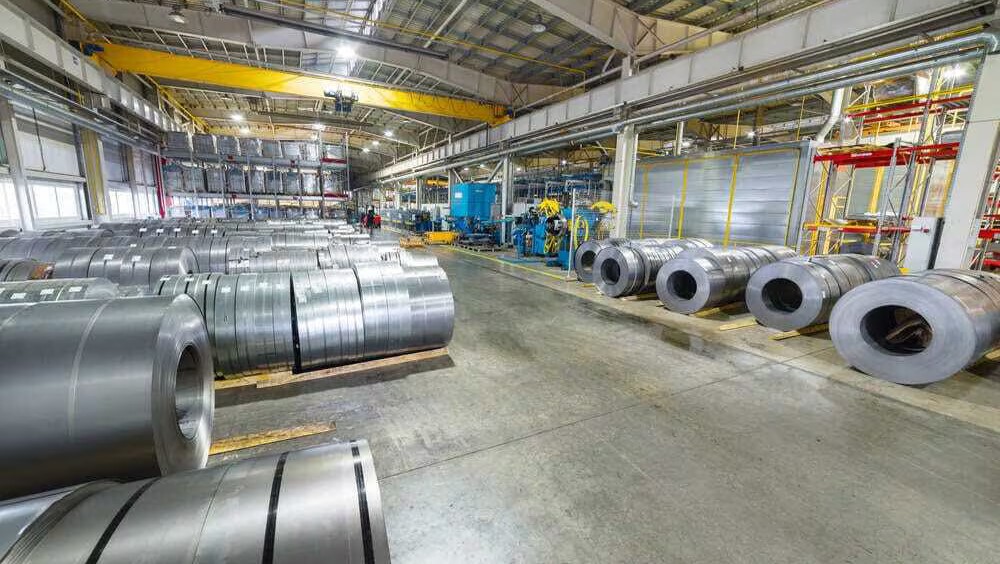India has started producing green steel as it continues on its path to becoming net-zero by 2070.
The first phase of the Steel Ministry’s pilot project to decarbonize the industry is scheduled to begin in Raipur, led by Matrix Gas and Renewables. The soon-to-be public company will replace coal in the production of sponge iron with green hydrogen, possibly opening the door for more environmentally friendly steel production nationwide.
The government will issue a letter of award (LOA) to Matrix Gas and Renewables, the lowest bidder for the pilot project, in the upcoming week, according to managing director Chirag Kotecha of the Chhattisgarh-based business, who spoke exclusively with Moneycontrol.
As part of a team that also comprises technological partners and the Indian Institute of technological, Bhubaneswar, Matrix is developing an indigenous technology that will investigate the use of green hydrogen to remove oxygen from iron ore and turn it into sponge iron. Traditionally, this has been done with coal or natural gas, but green hydrogen is a cleaner option since it emits just water as a byproduct rather than carbon dioxide.
As a prototype, we want to establish a 50-tonne-per-day factory dedicated to producing green hydrogen fuel. This is a build-operate project that is entirely supported by our own resources, and we have capacity agreements with steel manufacturers in Raipur,” Kotecha stated. For this project, the business has budgeted Rs 400 crore.
By 2030, India wants to generate 5 million tons of green hydrogen. Up to FY 2029–2030, a financial allocation of Rs 455 crore has been set aside to explore its potential usage in the sector. MECON was designated as the initiative’s scheme implementing agency (SIA) by the Steel Ministry earlier in the year. Regarding the usage of hydrogen in the DRI pilot plant, in the current blast furnace, and in the vertical shaft, MECON Limited requested bids from potential suppliers in June.
The ministry has formed 14 task groups thus far to address various elements of environmentally friendly steel production, including raw materials, technology, and regulatory frameworks.
As part of India’s National Green Hydrogen Mission, Matrix and its consortium partner Gensol Engineering recently emerged as the successful consortium for a 237 mega watts (MW) hydrogen electrolyser manufacturing capacity PLI scheme.
“We have obtained a production-linked incentive worth Rs 444 crore to cover the capital costs associated with establishing the electrolyser manufacturing facility. The location of this facility will be in Maharashtra, where the technology and land have been finalized. November is when we hope to complete this plant’s financial closure,” Kotecha stated.
The facility would supply electrolyers for the company’s hydrogen valley project in Pune and bio hydrogen project at NTPC Netra campus in Noida. It is anticipated that the unit will be put into service by July 2026. Its operating capacity will be increased from 350 MW at launch to 1 GW by 2028 and 2 GW by 2030.
“For the initial 350 MW, we anticipate a capex of Rs 700 crore, with a total of Rs 1,600 crore projected for the 2 GW capacity,” Kotecha stated. His business wants to raise between Rs 1,000 and Rs 1,200 crore in equity for its gas aggregation, CGD, electrolyser manufacturing plant, and green hydrogen projects. It is anticipated to go public by the middle of FY26.
Tags: Decarbonisation, Green Steel, Hydrogen



Recent Posts
Himachal Pradesh Plans Major Boost to Public Transport with E-Buses and Digital Upgrades
Ammonia-Fueled Container Feeder Design Marks Progress in Maritime Decarbonisation
ABS Develops Industry-Leading EV Battery Fire Simulation Modeling
Wilhelmsen Ships Service Joins the Maritime Battery Forum to Accelerate Maritime Electrification
Indian Student Team Wins Communication Prize at Monaco Energy Boat Challenge 2025
Babcock’s LGE Business Secures Contract for Marine Ammonia Fuel System to Advance Shipping Decarbonisation
Associated Terminals Deploys Liebherr’s All-Electric Cranes in Landmark Move Toward Cleaner Cargo Handling
Sanmar delivers fully electric emissions-free tug to major global operator Svitzer